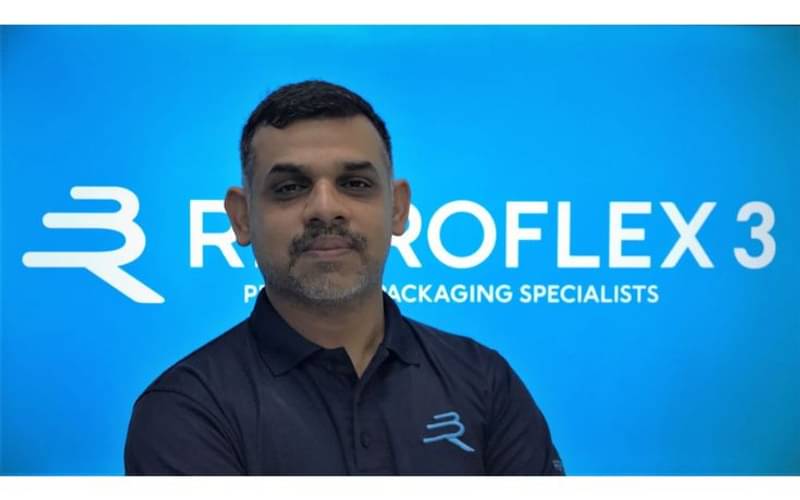Demand for quality can only be met through skilled pre-press talent
"Flexo trade shops that can invest in and nurture proper pre-press talent, adapt to new technologies and processes, and maintain a focus on delivering quality results are likely to have a promising future," says Sethunath Padmanabhan of Reproflex3 in an interview with Ramu Ramanathan
14 Nov 2023 | By Ramu Ramanathan
Ramu Ramanathan (RR): In the aspect of effectiveness, inventory and cost of gravure cylinders are higher compared to flexo, and the space taken by 10-15 jobs of gravure is equal to the space taken by hundred jobs of flexo. Your view?
Sethunath Padmanabhan (SP): Indeed, space efficiency is a notable advantage of flexo printing. While there may be considerable international variation in production costs due to pollution taxes levied on cylinders, the impact of these taxes is relatively low in India. Despite this, flexo remains highly efficient, owing to its streamlined timelines, improved logistics, and optimal space utilisation.
RR: There are trade shops in every major city that have flexo expertise. What is your take on the growth of flexo on the trade shop side and on the CI flexo?
SP: The growth of flexo on the trade shop side, particularly in comparison to gravure trade shops, is expected to be significant in India. As the demand for flexo printing rises, more trade shops are likely to emerge, with some transitioning from a matured offset market to the value-added flexo segment.
RR: What is the challenge?
SP: Traditionally, flexo trade shops have been focused on labels and corrugation, but with the increasing demand for CI flexo, the emphasis on print quality will become crucial. This heightened demand for quality can only be met through the presence of skilled pre-press talent within the organisation.
RR: Do-able?
SP: Yes. But it’s essential to acknowledge that this growth may also come with increased operational costs and pressure on profit margins. To thrive in this changing landscape, trade shops need to address these challenges effectively. Those who can invest in and nurture proper pre-press talent, adapt to new technologies and processes, and maintain a focus on delivering quality results are likely to have a promising future. Nevertheless, the journey may not be entirely smooth, and trade shops must be prepared to navigate potential bumps along the way.
RR: Your advice for new entrants and not just traditional flexo trade shops?
SP: For new entrants, including those beyond traditional flexo trade shops, my advice would be to identify and establish a Unique Selling Proposition (USP). In today's competitive market, relying solely on offering low prices is not a sustainable strategy. Instead, focus on differentiating your business by providing value-added services and solutions.
RR: There is tech migration from other processes on the print side – new entrants on mid-web flexo migrating from offset or narrow web. For example, on pre-press and press, both require expertise to take on wide web flexo kind of materials, inks, etc but is that development happening along with growth…
SP: The migration of new entrants from other processes, such as offset or narrow-web, to mid-web flexo is an intriguing development that is being closely monitored in the industry. Over the past couple of years, there has been a noticeable shift, with both label converters and some offset players making the transition to mid-web flexo.
RR: What is the reason for this migration?
SP: Several factors contribute to this migration. For instance, the rise of eCommerce brands has brought about unique requirements, including smaller quantity print runs, frequent changeovers, and a need for high-quality output. Mid-web flexo can effectively cater to these demands, making it an attractive choice for such brands.
RR: So, it is a path laden with opportunities…
SP: Of course. However, it’s essential to note that the mid-web flexo process requires expertise both in pre-press and on-press. Dealing with materials, inks, and complex reverse-printed flexo graphics poses challenges that demand specialised knowledge and skills.
RR: And this migration is not limited to label converters?
SP: It involves some gravure players making their way into mid-web flexo. This convergence of different printing processes adds an interesting dynamic to the industry.
RR: What about label converters?
SP: For label converters, the move to mid-web flexo requires a transformation from being primarily label producers to becoming players in the broader packaging segment. This shift necessitates a different outlook and approach, adapting to the complexities and diverse demands of the packaging industry.
RR: How much process control is required to get the expected performance out of the plate even though it’s integrated with CI flexo?
SP: Achieving the expected performance and quality output from integrated CI flexo requires a high level of process control. The process involves various elements such as plates, inks, tapes, anilox rolls, the CI flexo press, and the operator. Effective process control and continuous measurements are essential tools for ensuring successful flexo printing.


